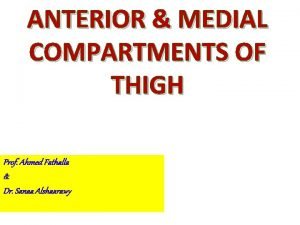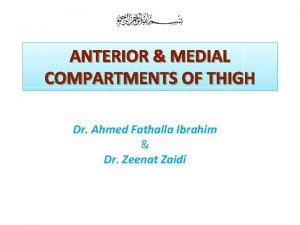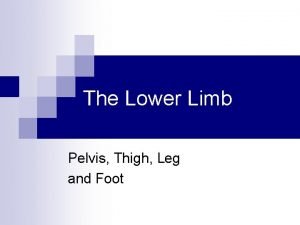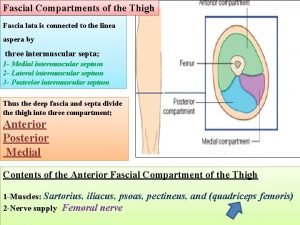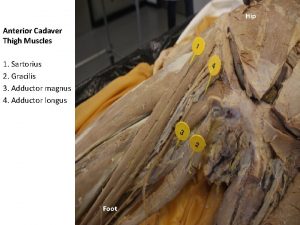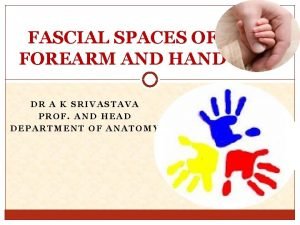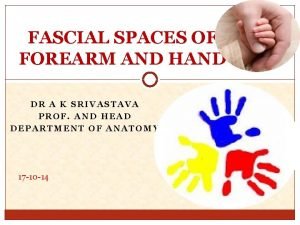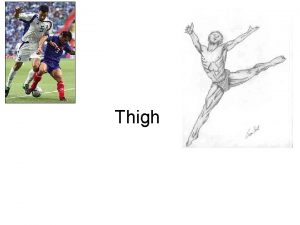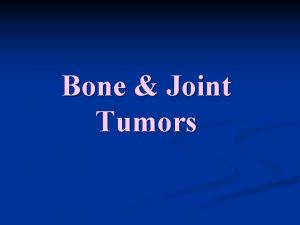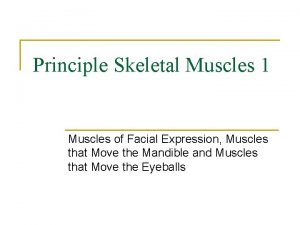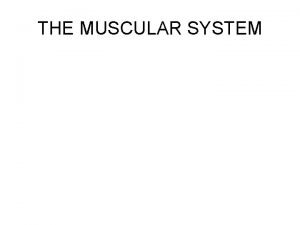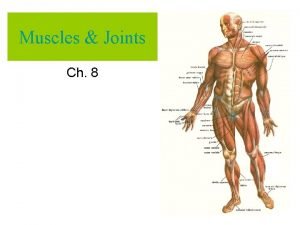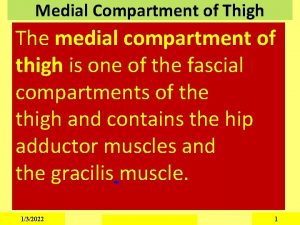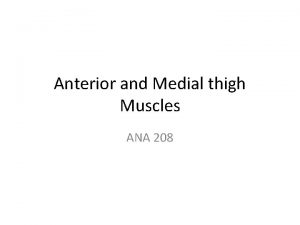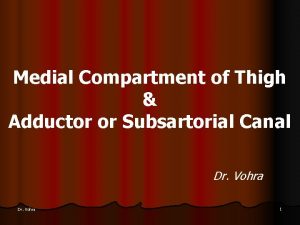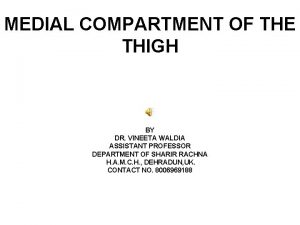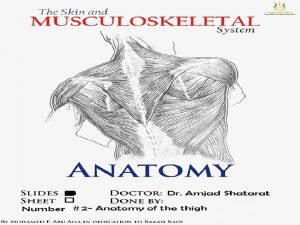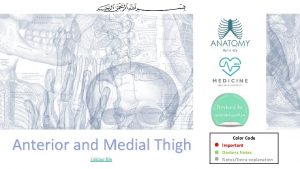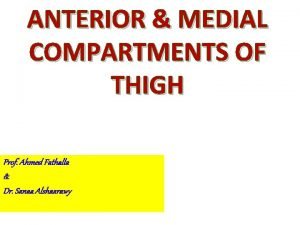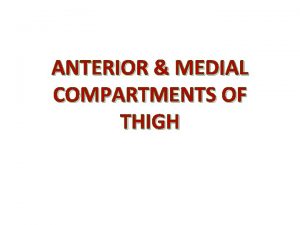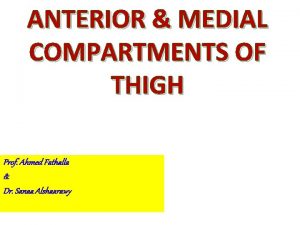ANATYOMY OF The thigh Medial fascial compartment Of
















- Slides: 16

ANATYOMY OF The thigh

Medial fascial compartment Of the thigh

Why do we need adductors for the hip joint ! Can you think of a bone that can be suitable to provide an origin for an adductor muscle of the hip joint? The Pubic bone Why? Would you be able to think of a bone that can be a good insertion FOR the adductor muscles ? The femur Why?

Contents of the medial fascial compartment 1 -Muscles GRACILIS ADDUCTOR LONGUS ADDUCTOR BREVIS ADDUCTOR MAGNUS OBTURATOR EXTERNUS re sa o e l usc way t m s r r n sio ducto imila s e eus s l s e ad in s n a i t c. u ti rs th ec rac that laye book ns: p r long nly p he er ree tai the is o cto In emb in th es of t ) con addu Brev s only e m Re anged e pag (pag and add. agnu : ins dd. M arr t of th layer a t t con ins: a tha firs r e e lay conta Th d con layer e s e Th third e Th 2 -Nerve supply: O b t u r a t o r 3 -blood supply: P r o f u n d a nerve femoris artery and obturator artery

Muscles of the Medial Fascial Compartment of the Thigh Adductor longus Origin: Body of pubis, medial to pubic tubercle Insertion: Posterior surface of shaft of femur (linea aspera) Nerve supply: Obturator nerve Actions: Adducts thigh at hip joint Anterior view

Adductor brevis Origin: Inferior ramus of pubis Insertion: Posterior surface of shaft of femur (linea aspera) Nerve supply: Obturator nerve Actions: Adducts thigh at hip joint

Adductor magnus(pubic part) Origin: Ischio-pubic ramus Insertion: mainly linea aspera, gluteal tuberosity and medial supracondylar line Nerve supply: obturator nerve Actions: Adducts thigh at hip joint Ischial part of Adductor magnus

What for Notice the adductor hiatus. Which structures pass through it?

Gracilis muscle Origin: Inferior ramus of pubis, ramus of ischium Insertion: Upper part of shaft of tibia on medial surface (SGS) area Nerve supply: Obturator nerve Actions: Adducts thigh at hip joint; flexes leg at knee joint (how? )

Gracilis

Obturator externus Origin: Outer surface of obturator membrane and pubic and ischial rami Insertion: Medial surface of greater trochanter Nerve supply: Obturator nerve Action: Laterally rotates thigh at hip joint One of the short lateral rotator muscles of the hip joint

Action of the adductor muscles as a group 1) Adduct the thigh although adduction of the thigh is not important in the mechanism of walking and standing 2 -Because their origin is in front of the hip joint ( in a plane that is in front of the hip joint) they can flex the thigh at the hip joint 3 - Because their origin is from the medial Side of the hip while their insertion is on the back of the thigh They can assist in lateral rotation of the thigh

Obturator Nerve Obturator nerve ØArises from the lumbar plexus (L 2, 3, and 4) anterior divisions ØEmerges on the medial border of the psoas muscle

Obturator Nerve It divides into ØThe posterior division anterior r division ØThe anterior division ( M o t o r ) it gives muscular branches to : Gracilis Adductor brevis Adductor longus and occasionally to the Pectineus. Sensory Ø It gives articular branches to the hip joint Øcontributes to the subsartorial plexus Øsupplies the skin on the medial side of the thigh.

ØThe posterior division It gives muscular branches (MOTOR) to the Obturator externus The adductor part of the adductor magnus and occasionally to The adductor brevis It supplies the knee joint (SENSORY

Referred pain at a d eive site of c r e p the ain n p a th he Is t on other ulus. i m locat inful sti a the p Hilton’s law states that the nerves crossing a joint supply 1 -the muscles acting on it 2 - the skin over the joint 3 - the joint itself. For example, The hip receives fibres from the femoral, sciatic and obturator nerves. It is important to note that these nerves also supply the knee joint and, for this reason, it is not uncommon for a patient, particularly a child, to complain bitterly of pain in the knee and for the cause of the mischief, the diseased hip, to be overlooked
 Muscles of the medial thigh
Muscles of the medial thigh Base of thigh
Base of thigh Muscle compartment of thigh
Muscle compartment of thigh Slidetodoc.com
Slidetodoc.com Fascia lata
Fascia lata Medial thigh
Medial thigh Midpalmar space boundaries
Midpalmar space boundaries Fascial spaces of palm
Fascial spaces of palm Gracilis sartorius
Gracilis sartorius Thigh sarcoma
Thigh sarcoma Thigh lupa
Thigh lupa Parts of leg
Parts of leg Lower extremity muscles
Lower extremity muscles Brachioradialis origin and insertion
Brachioradialis origin and insertion Muscles of the posterior leg
Muscles of the posterior leg Amphiarthroidal
Amphiarthroidal Label the body regions with the proper adjective.
Label the body regions with the proper adjective.

